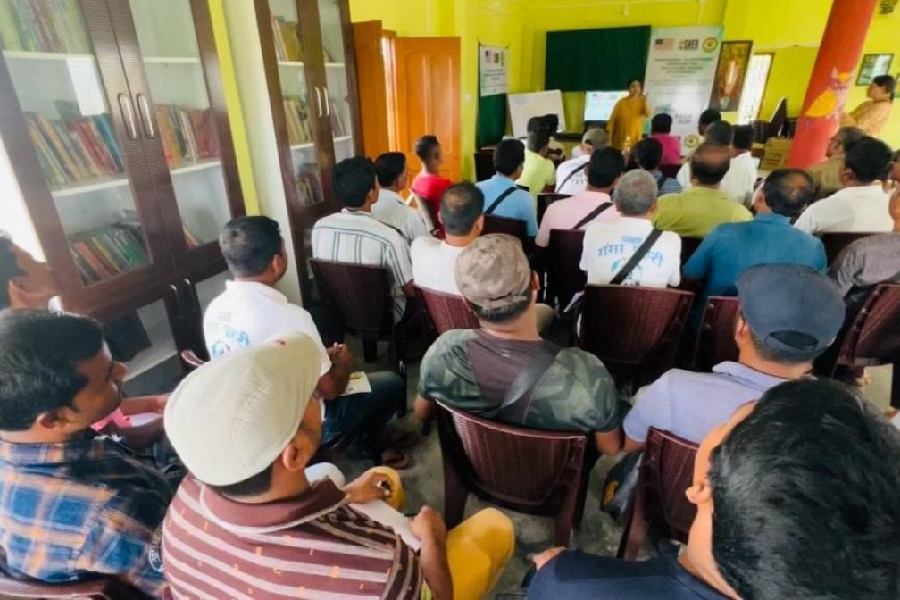Thirty-six tourist guides in the Sunderbans completed a six-day workshop that focused on English language on Saturday.
The guides have in the past attended sessions on climate change and wildlife conservation. But the latest programme was unique because it aimed at improving their communication skills, especially with tourists.
Around 2 lakh tourists used to visit the mangrove delta every year before the pandemic. Around 2.5 lakh tourists visited the Sunderbans last year, said forest officials. November to February is usually the peak tourist season.
The six-day training was a collaboration between an NGO, the US consulate in Kolkata and the Sundarban Tiger Reserve (STR).
Forest officials said they did not expect the guides to start an effortless conversation in English after a six-day programme.
“But we expect them to be able to communicate properly. The programme was more of a confidence-building exercise. Almost all the guides are locals. Most of them know the Sunderbans like the back of their palms. But they are not comfortable interacting with foreign tourists or groups from other states. We want to remove that fear,” said Ajay Das, the field director of STR.
Nityananda Choukidar, 38, is one of the guides who received the recent training. Talking to this newspaper, he explained why he thought it would be useful.
“Earlier, after spending a whole day on the boat with tourists, I would just say goodbye before leaving for the day. Now, I will say ‘Good night. My journey with you today ends now. But I will see you all tomorrow at 6.30am’. These little things make a lot of difference,” he said.
The training, held at Baghbon, an NGO-run community-resource centre at Pakhiralaya on the opposite bank of Sajnekhali Wildlife Sanctuary, also focussed on the uniqueness of the Sunderbans ecosystem and the need to protect it.
The guides were prodded to “handle tourists’ obsession with tigers’”.
The Sunderbans, a Unesco World Heritage site, is not only about tigers. It has much more to offer. A sighting of the Irrawaddy Dolphin is said to be worth a trip. There are over 100 species of birds. There isthe saltwater crocodile,the largest reptile in the world.
Plastic waste, one of the biggest threats to the Sunderbans ecosystem, was discussed. The trainer, Madison Nunes, an English language Fellow from the Regional English Language Office of the US embassy in New Delhi, said the course focussed on practical learning. “The course that I designed was to give them practical activities. So they would have the confidence to interact with guests... I designed many such situations,” she said. The “situations” included those where guides were asked to “politely” remind tourists about the “dos and don’ts” in the Sunderbans.
Das of STR said they were planning to enforce a rule that no tourist boat in the Sunderbans would be allowed without a guide.
The STR has around 70 guides now. “The training programme was to boost the confidence of the guides. Most of them have read till Class X or XII. But having worked for many years, they have a wealth of experience. A basic grasp of English will help them use this experience in a better way,” said Joydip Kundu of Society for Heritage & Ecological Research (SHER), the NGO that conceptualised the programme.
